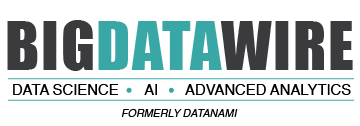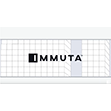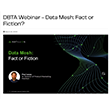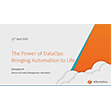
Data-Centric World: Insights from Object Management Group’s Latest Journal

Source: Shutterstock
Data isn’t just an asset or a resource for an organization, it’s a dynamic force that fuels innovation, shapes decision-making, and improves operational efficiency. However, all this potential comes with new challenges. Companies must figure out how to properly integrate, secure, and standardize data across complex ecosystems while ensuring compliance and maximizing its value.
To help us better understand the evolving role of data in a hyper-connected world, the Object Management Group (OMG) has released the 26th edition of the Journal of Innovation with a focus on data. This year’s issue is titled “Shaping the Future in a Data-Centric Connected World, from Creation to Usage and Compliance.”
OMG is a non-profit consortium that develops industry-driven technology standards. The group’s members include corporations, government agencies, and academic institutions.
Although OMG doesn’t operate like a regulatory body or government agency for developing technology standards, it does help share industry practices through consensus-driven standardization efforts that businesses find useful. This year’s data-focused edition reflects the growing importance of data in shaping modern technology.
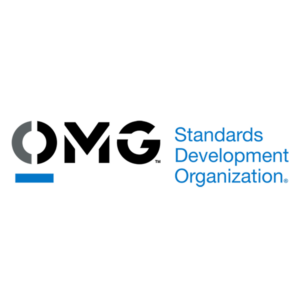 The latest OMG journal emphasizes the importance of data-centricity as a means to ensure data remains the foundation of system architecture and prioritizes intelligent data flow over traditional process-based architectures.
The latest OMG journal emphasizes the importance of data-centricity as a means to ensure data remains the foundation of system architecture and prioritizes intelligent data flow over traditional process-based architectures.
“Data is the cornerstone of modern innovation and driving progress across various sectors,” said Edy Liongosari, Chief Research Scientist at Accenture and Editor-at-Large for OMG’s Thought Leadership Group. “Embracing data-centric approaches and fostering robust data management practices allows businesses to unlock new levels of innovation, compliance, and operational efficiency.”
The rise of next-gen AI/ML applications demands rapid and reliable data exchange across complex interconnect systems. However, security risks, scalability constraints, resource limitations, latency, and interoperability issues make it challenging to ensure efficient and real-time data flow across diverse systems.
OMG recommends solving these issues by decoupling data from applications and using standardized frameworks like the Data Distribution Service (DDS) protocol that can enable real-time data sharing, reduce integration challenges, and improve system scalability.
Several real-world applications of DDS are shared in the journal, such as inter-connected medical devices that synchronize communication between imaging devices, monitoring systems, and robotic surgery units.
How do we make data truly meaningful and usable across industries? According to OMG, the answer lies in ontologies and standards, which can provide structure to data helping companies improve decision, scalability, and compliance.
The journal details use cases where ExxonMobil and Nextspace used digital twins to manage and integrate data from multiple sources while keeping it independent of visualization tools. This helped them adapt their systems without being locked into specific technologies.
As more data is generated with digital twins and other business systems, it can create fragmented or underutilized data, making it more of a liability. OMG recommends that enterprises take a lifecycle-based approach to managing data.
Not all data is created equal. Some are vital for real-time decisions, while other data needs to be preserved for legal, regulatory, or future business insights. By managing data with a lifecycle-based approach, businesses can cut through the clutter and ensure that important information stays useful. This also helps prevent the buildup of unnecessary or outdated data.
Peugeot Citroën faced the challenge of managing massive amounts of data related to components like brakes and throttle control systems. The company used the SAE project based on lifecycle management principles to ensure critical data remained structured, accessible, and compliant over time.
“Enterprises will struggle to harness their data assets’ value strategically if they do not incorporate the concepts of data value and uniform data lifecycle management into their enterprise data management strategies,” states the journal.
“In addition, enterprises need to regularly re-evaluate the value of their data to understand which data needs to be refreshed and upkeep – just like any valuable assets that require regular maintenance and upkeep. The exponential growth of data volumes in digital enterprises makes this issue urgent and time-critical.”
Another powerful tool for data management highlighted in the journal is graph visualization. It helps navigate, analyze, and interact with large-scale data models more effectively. OMG emphasizes that while graph-based technologies have advanced, their usability and real-world impact remain underexplored.
OMG’s acquisition of Enterprise Knowledge Graph Foundation (EKGF) earlier this year reflects its recognition of knowledge graphs as a critical component of modern data management. This move aligns with its focus on advancing graph-based technologies. For more detailed information about the Object Management Group’s perspective on data-centricity, you can download the full journal from their website.
Related Items
Snorkel AI Expands Platform with New Tools for Data-Centric AI
Acceldata Primed for Booming Data Observability Market
Data Mesh 2.0: Realizing the Promise of Decentralization
